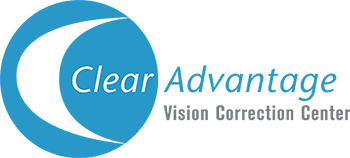The following information answers questions that we frequently hear from our patients about DaVinci Bladeless LASIK. For more information, please contact us.
DaVinci Bladeless LASIK is an all-laser, blade-free LASIK procedure. Traditional LASIK uses a microkeratome (a mechanical device with a precise, sharp blade) to create a thin flap in the cornea. DaVinci Bladeless LASIK does not use a microkeratome but instead uses the Femtosecond laser for an extraordinarily fast and ultra-precise corneal flap creation procedure.
Once the flap is created, the excimer laser works to make corrections needed to improve your vision. Because of its superior accuracy, DaVinci Bladeless LASIK is a great alternative for patients who previously were unable to get LASIK in the past due to thin corneas or dry eyes.
Because of the safety of bladeless treatments over traditional bladed methods, Clear Advantage only offers bladeless treatments.
DaVinci Bladeless LASIK candidates are nearsighted (myopic) or farsighted (hyperopic) with or without astigmatism. Patients whose corneas were too thin or too dry for LASIK may be good candidates for DaVinci Bladeless LASIK due to the increased accuracy of the femtosecond laser versus the microkeratome (the mechanical blade used in traditional LASIK).
Additionally, a suitable candidate will have a stable vision prescription for approximately one year and good overall eye health.
LASIK candidates must be at least 18 years of age (and preferably 21) so that the eyes – and vision – will have matured sufficiently. Although Clear Advantage has performed LASIK on people over the age of 60, in most cases, significant changes, such as the formation of cataracts, have already started. In these cases, our surgeon will recommend a cataract evaluation to determine whether a lens replacement will provide better visual results.
Even though the procedure itself is fast, we avoid rushing the patients in and out and like to take plenty of time with each of them. We tell our patients to plan to be in the laser center for approximately one hour.
However, because the time for the actual laser treatment is typically less than one minute per eye, most patients will be in the office for 45 minutes, and in actual surgery for about 15 minutes.
Additionally, our beautiful and comfortable waiting area is an ideal spot to have a friend or family member wait for the patient and assist the patient through post-operative instructions.
Throughout the entire procedure, your eyes will be numbed so that you will not feel any discomfort or pain. For approximately 1-3 hours after the surgery, you may experience mild tearing or a foreign body sensation, like an eyelash or a backward contact lens in your eye.
This sensation disappears after sleeping and, if needed, a topical eye drop is supplied for use after surgery. Usually, any discomfort goes away after a few hours.
Yes, it is recommended to have both eyes treated at the same time and most of our patients prefer to do so. However, if you choose to, you can have one eye treated at a time. There may be an additional charge due to the additional surgery supplies and follow up time required.
Yes. Prior to surgery, the eye is anesthetized with eye drops. The anesthetic used is the same powerful eye drops used during cataract surgery, which is far more invasive than DaVinci Bladeless LASIK. As a result, it is considered a painless procedure.
Although you will be able to see immediately after surgery, our surgical team will instruct you to go home and”rest” your eyes. A mild sedative, such as Valium will be prescribed for those who are nervous about the procedure or need assistance in taking a nap afterward.
After returning to Clear Advantage Vision Correction Center for a quick follow-up exam, most patients return to work the day after surgery.
Follow-up appointments are critical in monitoring your progress after surgery. Although a large majority of our patients do not have any complications after surgery and are enjoying their lives without contact lenses or glasses, it is imperative that you are seen on a regular basis after surgery.
Your follow-up appointments will be as follows:
- Surgery Day
- The day after surgery (1-day follow-up)
- One week after surgery
- One month after surgery
- Three months after surgery
- One year after surgery
We work closely with over 475 optometrists in the surrounding area. If traveling to our office for follow up appointments is an issue, chances are your regular eye doctor is already part of our network. If you do not have a regular eye doctor, we may be able to find a doctor in your area that is willing to provide your follow-up care at no additional charge to you.
A small number of patients have reported fluctuating vision, night glare, and dry eyes during the first few weeks after LASIK. However, these side-effects are greatly reduced with our advanced screening and treatment technology, such as the Orbscan.
For example, we measure the size of your pupils and the thickness of your cornea to prevent night vision problems. Zyoptix Customized LASIK also reduces the likelihood of glare and halos at night for those with larger pupils or more significant prescriptions.
For most patients, LASIK will correct refractive errors so much, that they no longer require the use of their eyeglasses or contacts. However, the need for reading glasses occurs naturally in most people in their early 40’s whether they are nearsighted, farsighted, or normal.
Laser vision correction can be calibrated to avoid reading glasses after 40 if one eye is kept slightly nearsighted (Monovision).
Yes. LASIK is considered a permanent procedure.






